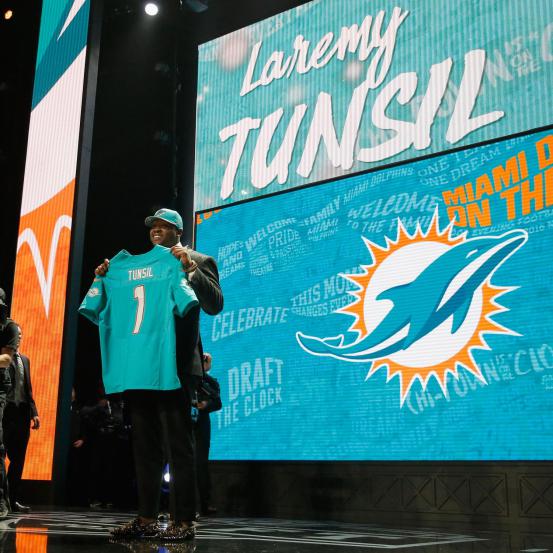- Commissioner’s statement on Ventura, Marte
- Ronnie O’Sullivan: Masters champion ‘felt so vulnerable’ in final
- Arron Fletcher Wins 2017 WSOP International Circuit Marrakech Main Event ($140,224)
- Smith challenges Warner to go big in India
- Moncada No. 1 on MLB Pipeline’s Top 10 2B Prospects list
- Braves land 2 on MLB Pipeline’s Top 10 2B Prospects list
- Kingery makes MLB Pipeline’s Top 10 2B Prospects list
- New Zealand wrap up 2-0 after Bangladesh implosion
- Mathews, Pradeep, Gunathilaka to return to Sri Lanka
- Elliott hopes for rain for Poli
Hard Lessons and Surprising Trends from the 2016 NFL Draft
- Updated: May 3, 2016

Those who do not learn from the past are doomed to repeat it. And those who do not learn from past drafts are doomed to be the Browns.
With another dramatic, surprising, exhilarating, often baffling and sometimes heartbreaking NFL draft in the books, it’s time to look at the big picture and take away some important lessons.
The following advice is directed at future NFL prospects. But much of what we learned can be applied to teams, the Draft Media Industrial Complex and hometown fans as well. We may not know this year’s “winners and losers” for another five years, but a close look at the draft board shows us the direction that the NFL is taking—and what everyone from prospects to draftniks must do to adjust.
Lesson One: Defuse All Character Time Bombs Long Before the Draft
Is there an old video of you out there smoking marijuana through a trombone-shaped bong? Does anyone with an axe to grind have access to evidence of anything even semi-incriminating or humiliating? Don’t get stuck in Laremy Tunsil’s position. Control the message. Get the information out yourself, on your own terms, weeks before the draft starts.
That doesn’t mean a prospect should post Phish concert tailgate videos himself. But an agent who knows what might be lurking on some conniver’s smartphone or hard drive can discretely spread the word to teams, and the player himself can then state his case during interviews. A good agent can even leak a heads-up to the media to keep the televised pearl-clutching to a minimum if something embarrassing surfaces six hours before draft coverage begins.
It’s fun to attack NFL teams for being stodgy/hypocritical in the wake of Tunsil’s slide to the 13th pick, as if the rest of us would get promotions or medals from our employers for appearing in an Internet bong video. The video had the same impact on front offices that a bachelor party video would have on a mother-in-law four hours before a wedding. Mothers-in-law know what happens at bachelor parties, but the video makes it immediate and visceral; given only 10 minutes to make a decision, she may well scream, “STOP THE WEDDING!”
It goes without saying there are things that should never be done on video in the first place, but this is 2016. If something is out there, someone is going to try to sell it to TMZ. Do everything possible to get ahead of the situation.
Lesson Two: Choose the Insurance Policy That’s Best For You
The good news for Jaylon Smith and Myles Jack, the linebackers who fell to the top of the second round because of serious knee injuries, is that each took out an insurance policy against an injury-related draft slide.
The bad news is that not all insurance policies are created equal. From ESPN’s Darren Rovell:
Jaylon Smith will get $900,000 in loss of value insurance as a result of slipping to the 34th pick in this year’s draft
— Darren Rovell (@darrenrovell) April 29, 2016
Myles Jack’s loss of value insurance policy kicks in at the 45th pick. Gets paid about $60,000 per pick from then on, collects up to $5M.
— Darren Rovell (@darrenrovell) April 29, 2016
Jack’s injury cost him millions of dollars in guarantees that his policy did not cover.
The injury-insurance system for college athletes is a boondoggle that combines the worst elements of the insurance industry and the NCAA bureaucracy. Experts have told me that the process needs to be simplified, streamlined and made more athlete-friendly. Remember, the 20-year-olds trying to fill out complicated forms and determine how to pay pricey premiums—the NCAA, bless its benevolent soul, started letting them borrow against future earnings for loss-of-value plans a few years ago—are forbidden from doing the one thing any sensible person would do when taking out a massive insurance policy: consult an agent with expertise on professional sports finances.
Until the NCAA reforms its rules to …
continue reading in source www.bleacherreport.com
